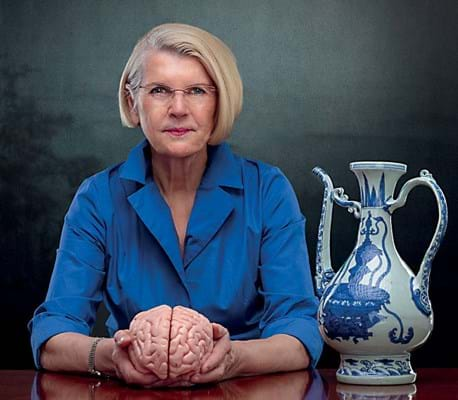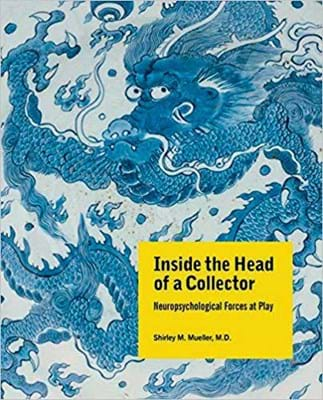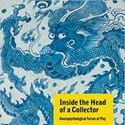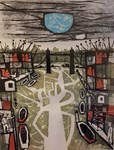ATG: How did you get the collecting bug?
SM: The ‘bug’ evolved from my interest in porcelain, and, particularly Chinese export porcelain. I was drawn to this area, I believe, because in high school I saw the movie Inn of Sixth Happiness with Ingrid Bergman. Like most girls of my age, I admired this actress, but beyond that I revered the character she played in the movie, Gladys Aylward, who led a group of orphans in China to safety from Japanese invaders.
By the time I graduated from medical school, I couldn’t follow in the footsteps of Gladys as I had acquired a husband and child so going to China was problematic. But, I could learn about China’s culture through collecting its art. The rest is history!
If collectors dig deep in their subconscious, they might find similar stories that started them off with their collecting. It is usually sparked by one experience early on.
Can you remember your first item?
My first piece of Chinese porcelain was purchased for me by my husband as a gift. It is a round jar without a lid, early 20th century and of little monetary value. Today, however, it holds pride of place due to its sentimental meaning to me.
What elements do you look for when purchasing an item?
When I see an object that resonates with my heart, I know it. Early on, it was teapots which were rare or filled a hole in my collection demonstrating Chinese export porcelain teapot chronology. By studying these pots and those in museum collections plus the examples in David Howard’s armorial books, I was able to make helpful deductions regarding 18th and 17th century teapot development. This insight resulted in my five published articles on the subject including in the American Ceramic Circle Journal, Orientations and Transactions of the Oriental Ceramic Society.
More recently, I am purchasing part tea sets. The latter would be a continuation of my interest in Chinese export porcelain teapot chronology but with the addition of a set rather than a single. When I buy these part tea sets, I feel I am saving history. My aim is to keep the group together. Here, again, I know it when I see it – what I look for is the rare and unusual that also fills holes in the 17th and 18th century span that is my interest.
And lastly, though small can mean a jewel, the large often makes a splash. To me, that means garnitures among other porcelains which are oversized. As my collecting matures, I tend to buy these sets that are showy and sure to leave a mark not only on me, but others as well. In doing that, I am also preserving them for posterity.
Where do you find items to buy?
The Netherlands is my best source followed by Portugal and the UK. Early on I bought from one dealer. From the early 2000s I have been buying more at auctions but I buy from dealers at fairs and visit the New York winter antiques show and Olympia fair in London. I used to like to visit the Haughtons’ fair in London. If I see something I want I will buy it wherever it might be.
What is the most you have ever spent on an item for your collection?
That would be a private matter, but certainly I would consider it a lot of money. But it is all relative. What is a lot to me would be little compared to a wealthy person and excessive to a person of lesser means.
How large is your collection?
About 800 pieces, give or take.
How do you display the items and where?
They are all over our home in display cabinets or closets that open for a visitor to view. A few are in boxes and, occasionally, some are temporarily in museums for exhibitions.
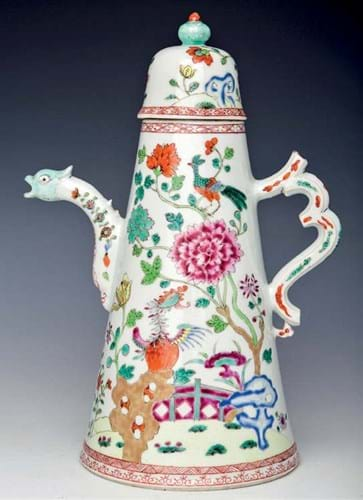
Chinese export porcelain famille rose lighthouse shaped coffee pot c.1740 from Mueller’s collection. The spout in is the form of a bird’s head with beak and the decoration includes rocks and flowering plants in a garden near a balustrade with a pheasant on a rock and a peacock on a flowering branch.
Have you considered selling any items from your collection?
Yes. Sometimes, I am approached by a potential buyer with a high offer. If I can part with the piece desired by the other party, I will sell under this circumstance.
Do you collect anything else?
Our home is filled with some high-end and some not-so-high-end 18th and 19th century furniture and clocks. I purchased the furniture, and my husband and I bought the clocks together. Always, I was responsible for the details of buying, which has made me more selective. Selecting, acquiring, shipping and placing porcelain and antiques in one’s home is time consuming and not a task I take lightly as I age.
Is there one item you are still looking for?
Yes, there are Chinese export porcelains depicted in paint on the ceiling of the Oranienburg Palace outside Berlin which I would like to own. So far, I have four or five of these porcelains. There is a total of eight or nine. Possessing all would warm my soul. Then, a small exhibit would be possible showing the ceiling and the porcelains painted on it together. The backstory could be told which was briefly included in my 2017 exhibit as guest curator at Newfields, previously the Indianapolis Museum of Art, for Elegance from the East: New Insights into Old Porcelain.
What do you plan for your collection in the longer term?
Many collectors are older and what will happen to their collection in the future is very important.
With innovations online I believe there should be a way to catalogue and collate your collection on a website. Collectors could work with designers to create the website just how they wish and it would keep the collection together virtually even after it has been split in the ‘real world’.
I still don’t know what to do with my collection. I have been giving pieces to museums every year. But I cannot part with my favourite pieces.
Collecting gives meaning to life and gives life a spark, in contrast to the day-to-day drudgery of life. It encapsulates the thrill of the chase and is overall a very pleasant experience. I believe collectors are lucky. We have a passion that drives us.
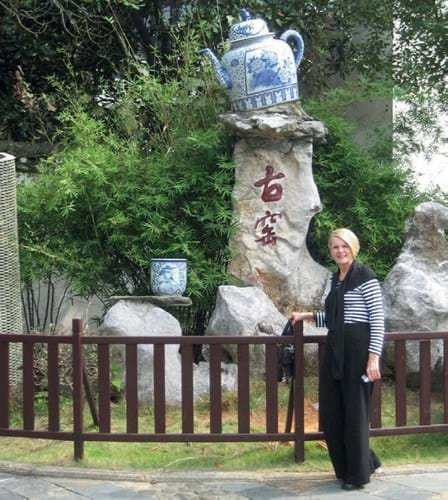
Mueller in the famed porcelain-producing city of Jingdezhen in China. She visited the town’s Ancient Kiln and Folk Custom Museum.
Can you explain briefly the mindset of a collector?
Ah, yes, the often-misunderstood mind of a collector. In my book, I use science to explain the reasons we collectors collect. It is not because we were deprived or depraved in childhood, as Muensterberger suggests in his 1995 book, An Unruly Passion. Rather, we collect because it gives us pleasure. Our collecting decisions, however, like other choices, can be emotional, and therein lies the core of my book, how we can use neuro and behavioural economics to understand ourselves better.
These insights can carry through to other spheres of our life and make not only our collecting more pleasurable but also our life experiences in general.
Shirley Mueller’s published articles can be found online at https://indiana.academia.edu/ShirleyMueller.
Inside the Head of a Collector: Neuropsychological Forces at Play is available via Amazon


